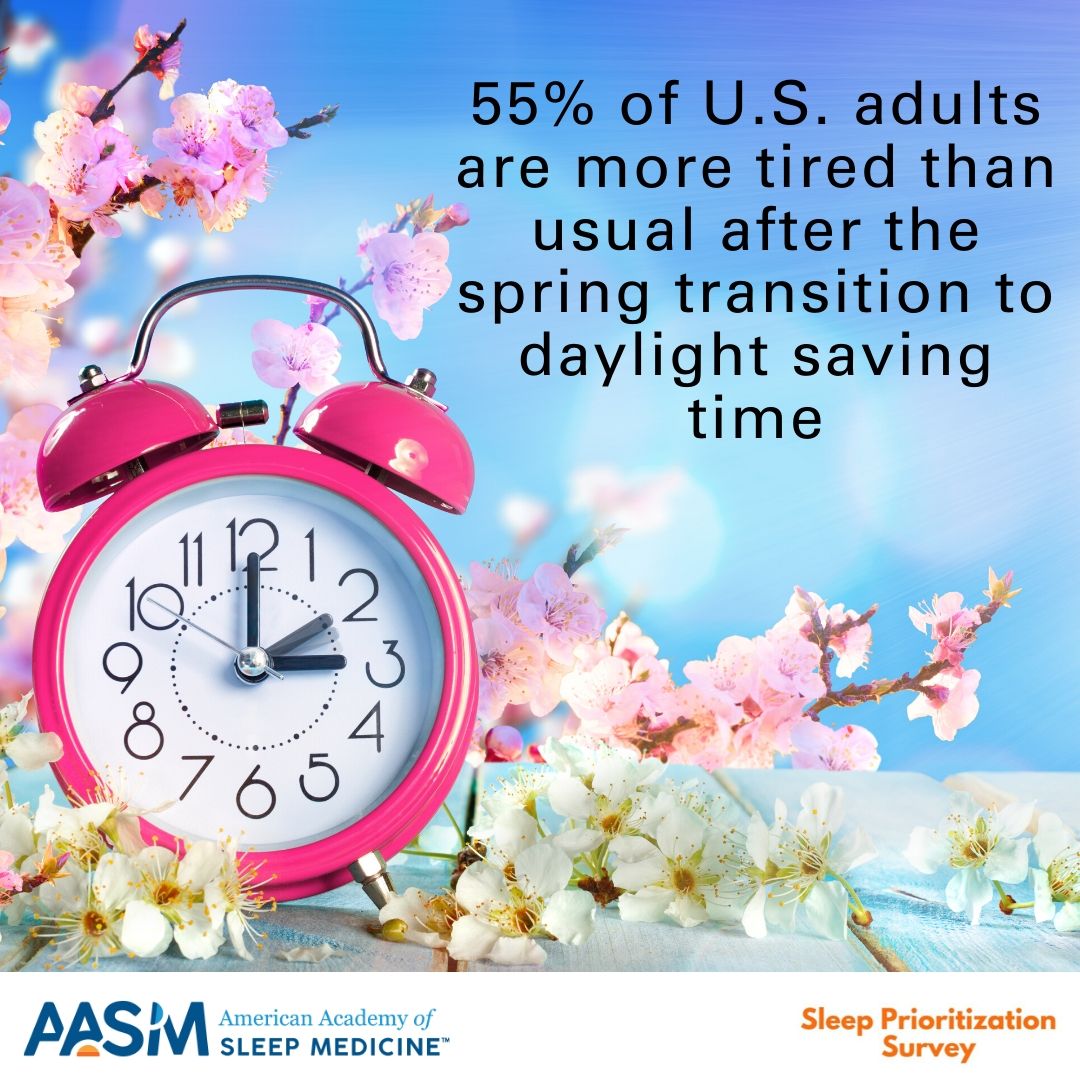A recent study shows that fatal traffic accident risks acutely increased by 6% in the U.S. following the spring daylight saving transition.[1] Risk of fatal accidents associated with the spring change to daylight saving time was highest in the morning, and locations further west in a time zone were affected more by the spring transition. Another alarming study reveals an increase in hospital admissions due to atrial fibrillation following the spring transition to daylight saving time.[2] When separated by gender, this finding persisted only among women. In contrast, no significant differences in atrial fibrillation admission rates were found following the autumn transition to standard time.
“Studies consistently show that the spring transition to daylight saving time is associated with negative consequences for health, safety, and productivity, all of which may be related to sleep disruption caused by the time change,” said AASM President Dr. Kelly Carden.
According to the AASM Daylight Saving Time Health Advisory, studies show that moving into or out of daylight saving time has adverse effects on sleep/wake patterns that can last about five to seven days. The effects of changing to daylight saving time appear to be most notable for those who have pre-existing insufficient sleep.
The AASM recommends the following tips to minimize adverse sleep effects due to the change to daylight saving time:
- Obtain at least 7 hours of sleep per night preceding and following daylight saving time changes.
- Gradually adjust your sleep and wake times beginning two to three days before the March 8 time change, shifting your bedtime 15 to 20 minutes earlier each night.
- Head outdoors on the morning of Sunday, March 8. Exposure to morning sunlight will help regulate your internal clock.
When performing activities that require maximum alertness, individuals also should exercise caution for at least seven days following the change to daylight saving time.
To download the AASM Sleep Prioritization Survey – Spring Daylight Saving Time report, click here. More information about the importance of sleep and your health is available from the AASM at www.SleepEducation.org.
###
About the Survey
The September 2019 AASM Sleep Prioritization Survey involved 2,003 adult participants in the U.S. The margin of error is +/- 2 percentage points with a confidence interval of 95 percent. Atomik Research, an independent market research agency, conducted the survey.
About the American Academy of Sleep Medicine
Established in 1975, the AASM advances sleep care and enhances sleep health to improve lives. The AASM has a combined membership of 11,000 accredited member sleep centers and individual members, including physicians, scientists and other health care professionals (aasm.org).
[1] “A Chronobiological Evaluation of the Acute Effects of Daylight Saving Time on Traffic Accident Risk,” Current Biology, Jan. 30, 2020 – https://doi.org/10.1016/j.cub.2019.12.045.
[2] “Changes in Atrial Fibrillation Admissions Following Daylight Saving Time Transitions,” ScienceDirect, Jan. 27, 2020 – https://doi.org/10.1016/j.sleep.2020.01.018,
Original post https://alertarticles.info



